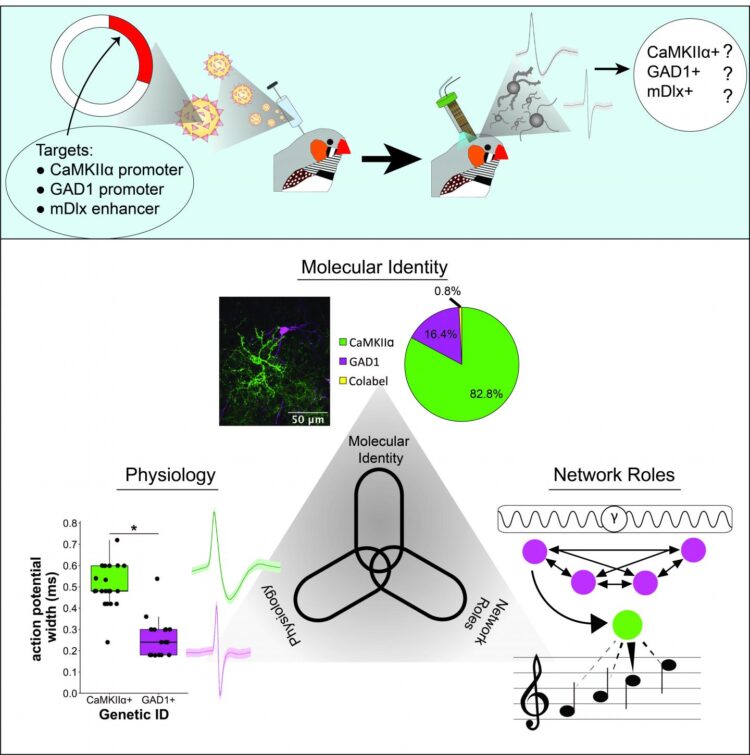UMass Amherst research advances understanding of brain circuits

Credit: UMass Amherst
University of Massachusetts Amherst neuroscientists examining genetically identified neurons in a songbird’s forebrain discovered a remarkable landscape of physiology, auditory coding and network roles that mirrored those in the brains of mammals.
The research, published May 13 in Current Biology, advances insight into the fundamental operation of complex brain circuits. It suggests that ancient cell types in the pallium – the outer regions of the brain that include cortex – most likely retained features over millions of years that are the building blocks for advanced cognition in birds and mammals.
“We as neuroscientists are catching on that birds can do sophisticated things and they have sophisticated circuits to do those things,” says behavioral neuroscientist Luke Remage-Healey, associate professor of psychological and brain sciences and senior author of the paper.
For the first time, the team of neuroscientists, including lead author Jeremy Spool, who worked as a National Institutes of Health (NIH) postdoctoral fellow in Remage-Healey’s lab, used viral optogenetics to define the molecular identities of excitatory and inhibitory cell types in zebra finches (Taeniopygia guttata) and match them to their physiological properties.
“In the songbird community, we’ve had a hunch for a long time that when we record the electrical signatures of these two cell types, we say – ‘that’s a putative excitatory neuron, that’s a putative inhibitory neuron.’ Now we know that these features are grounded in molecular truth,” Remage-Healey says. “Without being able to pinpoint the cell types with these viruses, we wouldn’t be able to learn how the cell and network features bear resemblance to those in mammals, because the brain architectures are so different.”
The research team used viruses from a collection curated by co-author Yoko Yazaki-Sugiyama at the Okinawa Institute of Science and Technology in Japan to conduct viral optogenetic experiments in the brain. With optogenetics, the team used flashes of light to manipulate one cell type independent of the other. The team targeted excitatory vs. inhibitory neurons (using CaMKIIα and GAD1 promoters, respectively) in the zebra finch auditory pallium to test predictions based on the mammalian pallium.
“There’s so much work out there on the physiology of these different cell types in the mammalian cortex that we were able to line up a series of predictions about what features birds may or may not have,” Spool says.
The CaMKIIα and GAD1 populations in the songbird were distinct “in exactly the proportions you would expect from the mammalian brain,” Spool says. With the cell type populations isolated, the researchers then examined systematically whether each population would correspond to the physiology of their mammalian counterparts.
“As we kept moving forward, again and again these cell populations were acting as if they were essentially from the mammalian cortex in a lot of physiological ways,” Spool says.
Remage-Healey adds, “The correspondence between the cortex in mammals and what we’re pulling out with molecularly identified cell types in birds is pretty striking.”
In both birds and mammals, these neurons are thought to support advanced cognitive functions, such as memory, individual recognition and associative learning, Spool says.
Remage-Healey says the research, supported by NIH grants, helps delineate “the basic nuts and bolts of how the brain operates.” Knowing the nuts and bolts builds foundations necessary to develop breakthroughs that could lead to neurological interventions for brain disorders.
“This can help us figure out what brain diversity is out there by unpacking these circuits and the ways they can go awry,” Remage-Healey says.
###
Media Contact
Patty Shillington
[email protected]
Related Journal Article
http://dx.





